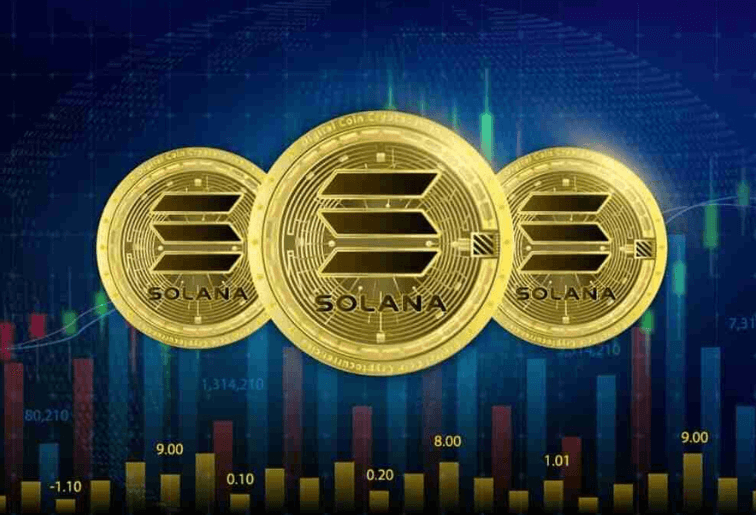Solana is one of the most current contenders to enter the decentralized application area, flaunting lightning-quick speed and exceptionally serious transaction expenses.
Solana is a blockchain-based smart contracts stage intended to work with the production of decentralized applications (dapps). The venture was established by Anatoly Yakovenko in 2017, while its local blockchain and crypto-token, SOL, authoritatively went live three years after the fact in March 2020.
The venture expects to go up against existing dapp stages, for example, Ethereum and promotes that its blockchain can handle a limit of 65,000 transactions each second (tps) with normal charges of $0.00025. Interestingly, Ethereum can deal with around 30 tps (preceding the culmination of its 2.0 overhaul) with a normal transaction expense of $4.50.
What makes Solana exceptional?
Consensus mechanism
One thing that separates Solana from other dapp-stage contenders is its special way to deal with the transaction approval measure. Remarkably, Yakovenko fused a framework for timestamping transactions to such an extent that validators (PCs that check transactions on the blockchain) all have a uniform perspective on the request in which new exercises are being executed on the blockchain.
All in all, this framework is basically a sort of consensus mechanism since network members are entrusted with dissecting the legitimacy of transactions and should concur on a solitary history of occasions – this is the reason the entire idea is known as the proof of history (PoH) consensus.
Transaction processing
By joining PoH and PoS consensus conventions, Solana has accomplished uncommon transaction speed without executing layer 2 items like side chains. This implies the Solana environment depends on a solitary chain, dissimilar to other blockchain biological systems that pick sharing transaction loads over different interoperable blockchains. This is known as “sharding,” and is an element expected to carry out in Ethereum during its 2.0 redesign. Polkadot and Zilliqa are different instances of dapp stages that additionally influence sharding to further develop their transaction processing abilities (otherwise called transaction throughput).
Solana’s single blockchains foundation gloats an extraordinarily quick square time, with another square made each 400 milliseconds.
What components does Solana have?
Tower Byzantine fault tolerance (BFT) algorithm
The Tower BFT convention supports the PoH consensus mechanism to such an extent that validators access a solitary worldwide wellspring of time. With this, the organization can use a synchronized clock and proficiently wipe out the need to figure and store the timestamps of past transactions on the blockchain. Conversely, other blockchains permit validators to choose unsubstantiated transactions aimlessly – paying little mind to the request in which they were executed – and load them successively on the blockchain.
Because of this methodology, they need to process the timestamps as a component of the prerequisites for adding new transactions to the blockchain. For Solana, the accessibility of PoH and Tower consensus kills the requirement for validators to measure timestamps, along these lines making more space to zero in on different parts of the transaction approval measure.
Gulf Stream
Solana utilizes a framework called Gulf Stream to delete the requirement for a mempool. Think about a mempool as a sitting tight region for unsubstantiated transactions. This is the place where validators select transactions and consequently add them to the blockchain. With respect to Solana, transactions are sent to validators even before the situation with recently added squares of transactions is finished. With this, the Solana blockchain guarantees that it doesn’t have a holding up rundown of unverified transactions.
Sealevel
Solana enhances the processing limit of its blockchain by permitting smart contracts to run equally. This innovation, named “Sealevel,” extends the versatility of Solana so numerous smart contracts can run simultaneously without antagonistically influencing the speed of the blockchain.
Wormhole
Solana’s wormhole include presents a trustless crossing-over channel between Solana, Ethereum, Binance Smart Chain, and Terra’s blockchains. That permits clients to consistently move tokens (fungible and non-fungible) made in these environments between each other, just as permit non-local dapps to share things like prophet information and liquidity.
For what reason does Solana underline speed?
Like Ethereum, Solana upholds smart contracts – these are self-executing PC programs that play out specific capacities when predefined conditions are met. Along these lines, engineers can dispatch and work their blockchain applications on Solana.
What’s more, as we have seen in the Ethereum biological system, high-transaction throughput is consistently one of the center prerequisites, particularly when blockchain applications are involved. This is the reason the Ethereum environment is going through a significant update. In that capacity, the Solana improvement group has consistently searched for ways of enhancing its blockchain’s yield.
Solana hopes to have a flourishing decentralized money (DeFi) market and effectively add to the thriving NFT area.

